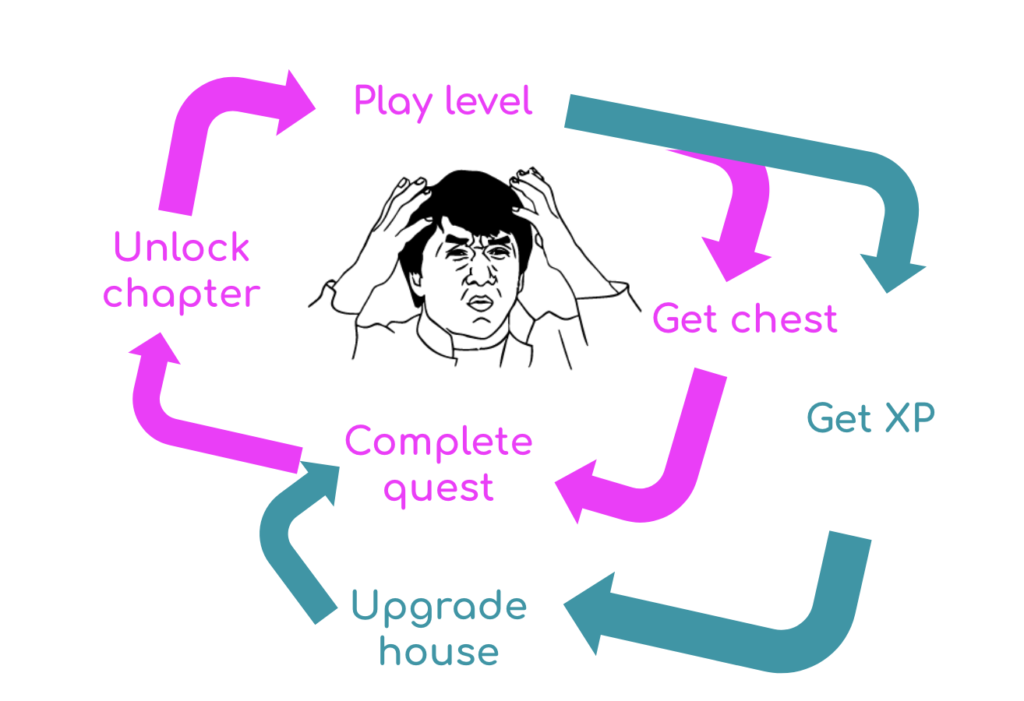
Whenever I have the chance I ask friends or family what games they’re playing and what they think about them. But the nicest insights I get when we talk about what other games they played but abandoned eventually.
I think we game designers expect players to tell us that they churn in a game because they find progression slow, gates are too long, or because they just don’t engage with the story. And those pieces of feedback we can just friendly assimilate with a ‘not all games are for everyone’, or with a ‘for a free to play game to be sustainable, we need to some times bring the player to some gates’.
But I think there’s another notorious reason why many people churn in some games that falls completely into the designer’s account. Some times players stop playing because they just don’t know what to do to progress.
Player might not always be that aware of the problematic, so the issue might be more difficult to spot. You might get feedback ranging from players thinking that they’re not skilled enough or that they got stuck because the game is too difficult. But then you need to deconstruct that feedback and see if it relates to the common denominator that the core loop is not intuitively understandable.
I don’t think I’m fully aware of until what extend this is an issue in casual games, but I just have the feelings we devs are predisposed to get core-loop blinded after a while, take its validity for granted, and then spend our time adding features and content on top of a weak basis, which means burying the problem until it gets impossible to fix.
The kind of issue I think I spotted in here is not necessarily connected to the functional appropriateness of the loop. It might be the most robust and economy friendly loop ever. But if people can’t make sense out of it that early on, their behaviour just won’t get parsed into the systems and pacings we planned while balancing.
Meta games and gating
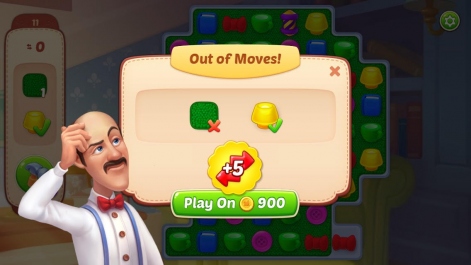
One of the factors that some times favours this kind of problematic, in my opinion, is the way we use the metagame as a gating mechanism.
Let’s say you have a match-3 game where you need to engage in city-building tasks such as buying buildings and upgrading decorations to access new levels. It can still be a neat core loop that paces progression, but if you try to make sense out of it outside the world of the game, that’s not the most common sense affordance ever. Especially in match-3, where gameplay levels are pure abstractions where mechanics rarely have to do with or fit mechanically with everything else in the game.
I mean… can anybody answer the question of… what has matching pieces to do with renovating a house? Still, I might be over-thinking it, because none of the gazillion people who play Homescapes seem to worry about it that much. Well, I certainly don’t expect that problematic to have an impact on people who play the game, but how do I know that that’s not causing frictions that affect retention?
Organic core loops
I thought about this for the first time after playing Paradise Bay.

I realized how much sense and how much of a consistent experience it was for me, and I guess, for the player. Let me roughly deconstruct what are, in my opinion, the core elements of the game:
- Theme: Paradise Bay is a game about making your way as a trader in a tropical island
- Narrative: The protagonist, Keani, meets the other characters that visit or inhabit the island, that help her expanding the business
- Game actions or verbs: producing, crafting, trading, exploring
- Gates: time it takes to products to be produced, or to boats to go sale to trade products
- Core loop: YOU FULFIL ORDERS >> TO EARN COINS & XP >> TO BUY PRODUCTION BUILDINGS AND RECIPES >> TO FULFIL NEW ORDERS
Nothing foreign here. Nothing that feels forced into the game to please design requirements. There are indeed other features or mechanics in the game that are not thematically justified, but even those rely on common places, or are not core-loop related.

Another example of what I’m calling organic core loop takes place in KleptoCats. One small cute game with a straight forward core loop where, I think, there’s little room for confusion so as to what’s expected from the player. Core loop would be something like:
- YOU TAKE CARE OF THE CAT >> CAT GOES FIND STUFF (COINS SPEED UP THE TIME IT TAKES THEM) >> CAT FINDS AND BRINGS YOU THE STUFF (COINS)
There are still things here that don’t make that much sense if you think about it, like ‘Why is the cat bringing you the stuff quicker if you pay coins?’. ‘Where is the cat bringing the coins from?’ And I think that’s fine. Things need to make sense inside the world of the game, BUT relying on common places and parsing logic patterns that are present the ‘real’ world.
For example, following up the previous example:
- There are indeed gates here, which actually become longer over time. But there’s a difference in asking you to wait for one hour because of whatever arbitrary reason, and another, to ask you to wait because your cat is exploring outside.
- A cat would hardly make use of money, but these are actually humanized cats that talk and stuff, so it wouldn’t be a far-fetch to assume that these cats would take part in an exchange where they give you something you want if you pay with money.
How to reduce friction in the core loop
Despite all this, I admit that core loops that are parsed on mental models of reality or naturally themed mechanics are not always possible, or even desirable.
I actually find a certain joy in trying to make the pieces fit together, and I get fascinated when I see chunks of design in games where things that wouldn’t make sense taken to the real world work in full harmony for the player into the game.
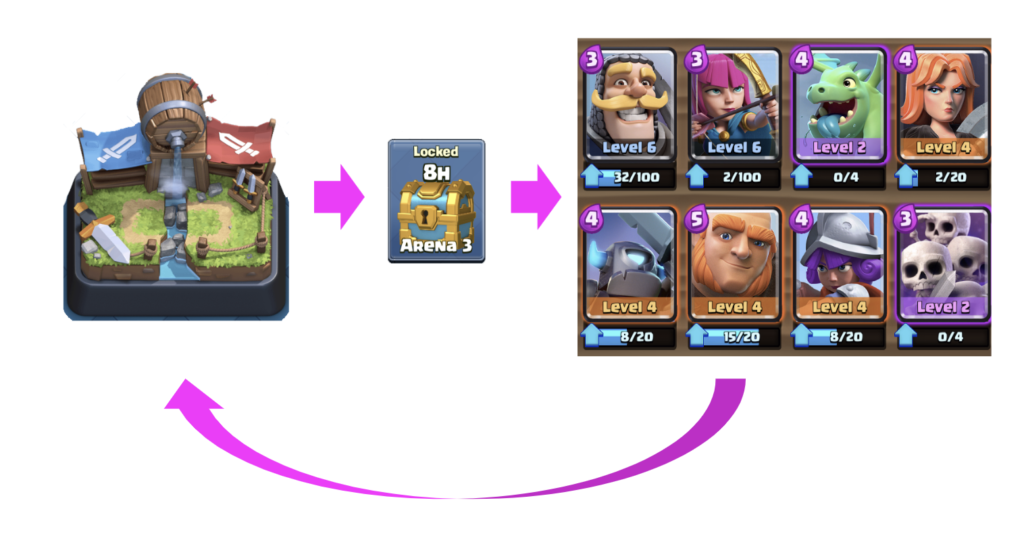
I don’t know what the right formula to make these things work is (in case there’s even one), but still I wanted to list some tools or design routines I think help core loops being better parsed by the player early on:
Don’t rely everything on tutorials and funnels…
I think funnels or tutorials that explain the core loop in F2P games pop up in the worst moment in terms of the player’s receptivity, which is right after she installs the game to enjoy a new core experience that will help her disconnect or enjoy a few minutes of digital entertainment.
And tutorials are (or they might be) perceived as exactly the opposite of playing, which is having someone teach you something.

I’m not sure up to what point tutorials work in teaching the core loop effectively, or if they might actually be doing that only vaguely and at the price of hurting important KPIs. What I wouldn’t do, in any case, is rely everything on tutorials and funnels, as in ‘players know, we taught them the first minute they played the game’.
Despite this, I realized funnels or tutorials fulfil another function that might not be that clear, or even intentional from our side, which is touring the player throughout the UI/UX ecosystem of the game so that later on, when she needs to tackle a specific interaction, stuff is familiar. So be careful with removing all tutorials or not assessing correctly what they might be useful for at any moment.
… Instead gently push the player to go through the core loop as soon as possible
There are habit-forming theories about how much time it takes people to assimilate habits depending on the level of engagement the activity requires and blah blah blah.
Regardless of the number of days that habit-forming period consists on, my intuition tells me the sooner the player gets exposed to that activity and the more often they repeat the cycle at the beginning, the more willing she’ll be to accept it as part of her routine, and be ready to learn things on top.
Things I see they do in F2P games to facilitate this is, for example, by giving away extra amounts of free energy to extend first sessions, or by minimizing the first levels of the game, both in terms of difficulty and variety of mechanics.
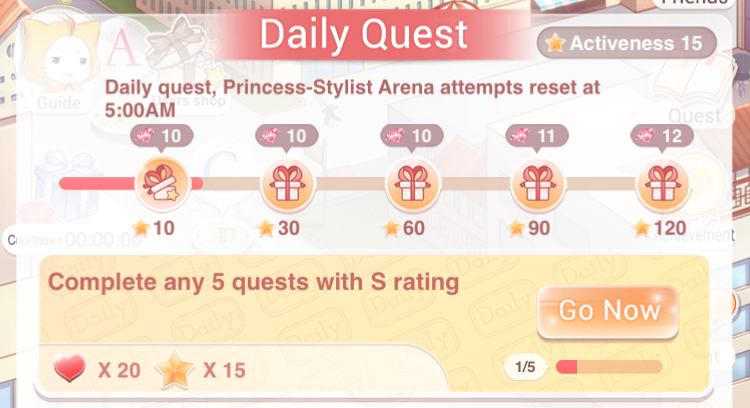
Then we know it usually takes us more effort to tackle things we never did before, and to minimize that friction and avoid it becomes a blocker for the player, you can also work on your UI/UX and difficulty balancing to reduce the negative feelings associated to starting things from scratch.
Empty progress bars, long check lists with all tasks at zero, big numbers on economy requirements to unlock content, all those things remind me, maybe just subconsciously, to exams. On the other side, tackling progress tracks or tasks that are partially completed suggest me more an imminent feeling of completion and reward.
Play with reinforcing that emotion and make it easy for the player to start a new cycle in the core loop.
Focus attention
To focus attention early on in what you think is crucial the player learns first, an effective method is just unlocking functionality or mechanics at a deliberated pace.
Also, removing temporally chunks of UI from pop-ups helps avoiding the player starts asking what one thing is before even learning what came before.
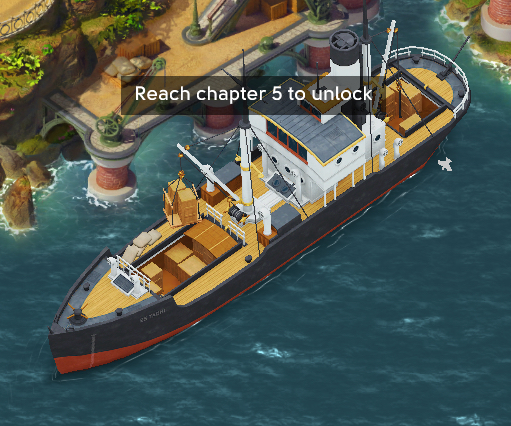
Keep the metagame a metagame
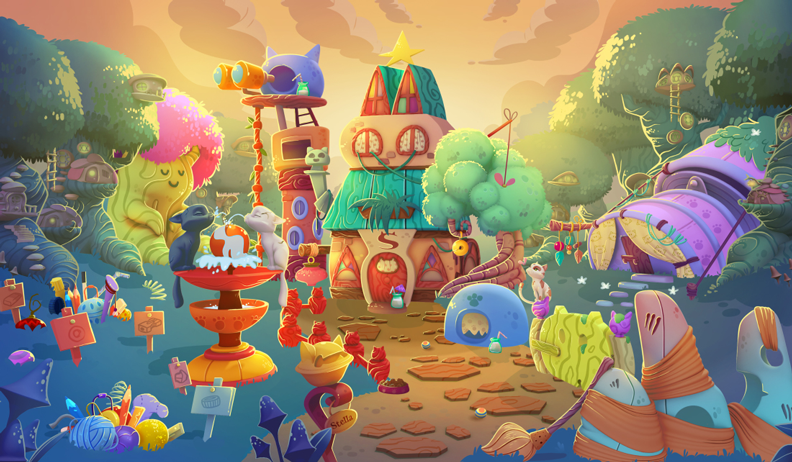
If you sustained the whole economy and balancing of your game on the core loop, then you hope that’s what will drive the player’s ride into your game. Your metagame, though, might have additional purposes, like gating the content, adding an extra layer of content, or help giving more depth to the core game.
Precisely because the metagame has that relative independency from the core loop, it looks like we some times bring them to the direction of customization or cosmetics, offering the player systems with their own complexity and appeal.
If the player has these systems that are heavy on visual mechanics, that are self-explanatory and intuitive, and that have enough options and depth by themselves earlier on, the player might find it more pleasant to spend time in there than trying to understand the other parts of the game, where they don’t know what to do yet.
I would try to keep metagames short and sweet. Try to figure out what’s their real function in the game, and get rid of functionality that might make the thing itself nicer and more polished, but the whole game risk the balance you planned earlier on.
Playtest
Every time I watch someone go through a funnel, or playing their first sessions in a game, I learn a lot. Because that’s where you spot the potential points of friction.
I think it’s important to sanity check core loops. Just because the player keeps on playing the game by brute forcing her way, it doesn’t mean they’re not struggling with some things, or that there isn’t an underlying problem that’s slowly becoming bigger until it will fall of its own weight.
Watch people play and focus on their natural reactions to the new stuff that pops up; ask them to narrate the logic they find behind what’s going on in front of their eyes; ask them if there was something they would have expected working differently.
Finally, check that the assumptions you worked with, especially in terms of time invested, and attention required, are double checked by the way the player actually engages.
Conclusion
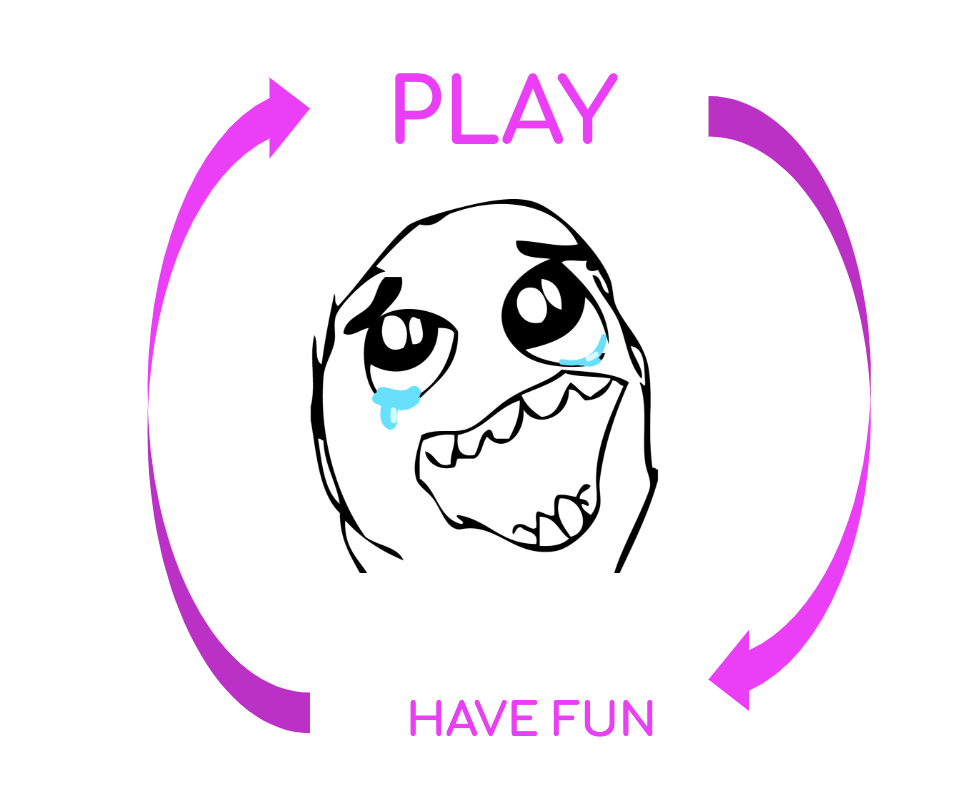
Many features, content and functionality in a game are built on top of the core loop. If the player understands it early, then you have material from which you can try to motivate routines and have a solid basis to maintain the rest of the experience.
Think about the game as a country, and the core loop as the grammar of its language. If the visitor understands that, she can move around comfortably and enjoy the variety of things she comes across with in that place.
However, if she didn’t learn the grammar (for example, because they didn’t teach her properly), but she’s for some reason highly motivated, she can still brute force and workaround her way into places, but even the most simple action, as buying bread at the bakery, will be painful. So unless she doesn’t find a way, she’ll eventually leave to visit a different place.
Leave a Reply